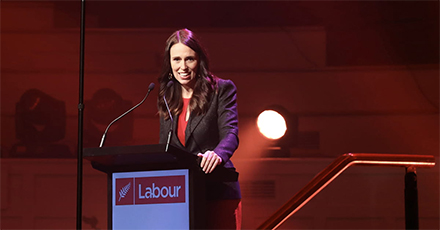New Zealanders should know in the next few days how the newly elected Labour Government there plans to govern, and what priority it places on the nation’s forestry industry. Source: Timberbiz
A number of different scenarios present themselves, including some form of coalition with the Greens and placating the anti-plantation/carbon sequestration Nationals/farming lobby.
On the side, watching closely is the NZ’s Forest Owners’ Association. The sticking points there are which side of the Greens is given any preference, and more importantly what gravitas the Prime Minister places on the forestry portfolio. The choice of minister and Cabinet seniority will be important.
Some are of the opinion that nobody with any seniority in the Labour Party would want the portfolio when the Government is busy fighting the Nationals to restrict forest planting to keep the farming lobby happy.
Labour and the Greens have met a number of times since the election to discuss what role the latter might play in the new government.
“We are working hard, and we are moving forward,” Greens co-leader Marama Davidson said.
There are a number of political reasons for PM Jacinda Ardern to involve the Greens.
Most coalitions involve other parties that are purely political machines; the Green party is both a social movement and a political party.
Its support ranges from activists to those who back the more pragmatic politics of co-leader James Shaw, who was climate minister in Arden’s first government.
Some Greens prefer for the party/organisation to be outside government to preserve the ability to criticise.
Coalition governments are rare in New Zealand, and rarely end well, and no one really expects one this time around.
As has been pointed out by commentators in New Zealand, the previous government was, by necessity, a Labour/New Zealand First coalition.
The Green party also gave support via a confidence and supply agreement for which it gained three ministerial posts and a parliamentary under-secretary. Ardern has so far appeared to pour cold water on a repeat for the Greens.
For a start, even though Jacinda Ardern claimed 64 of parliament’s 120 seats – the only outright majority since 1996 – coalitions in New Zealand have usually ended in tears.
Opposition leader Judith Collins said she was unsurprised Labour wanted to bring the Greens into a governing arrangement.
“That’s pretty much what I said during the campaign … it shows that Labour might want the Greens to blame them for any decisions that they make,” she said.
Labour’s poll performance means it holds all the cards in the negotiations.
If there is a forestry minister from the Greens – a possibility but not likely – there would be a world of difference between the Greens co-leaders James Shaw and the other likely candidate Eugenie Sage who was the Minister of Conservation and Land Information, as well as holding the Associate Minister for the Environment portfolio in the previous government.
She would reportedly have all the forests ripped out and replanted with indigenous trees whereas Shaw is understood to have respect for the carbon sequestration that comes out of pine trees.
The juggling act for the Green party, which campaigned on climate action, protecting nature and ending inequality, is to find a path that shows it is ready to govern but does not burn off the activist part of its base.
Ultimately, it will be up to a group of high-ranking Greens’ members to decide whether any deal offered up by Labour is good enough.
If not, and the membership votes it down, the Greens will be sitting in the Opposition benches for the next three years.
A spokesman for Ardern has said it is her intention to wrap up talks by today. That means Ardern would announce her Cabinet early next week.








